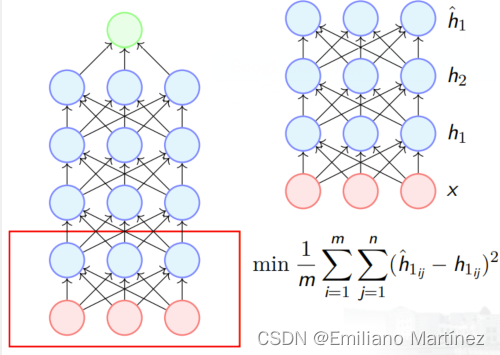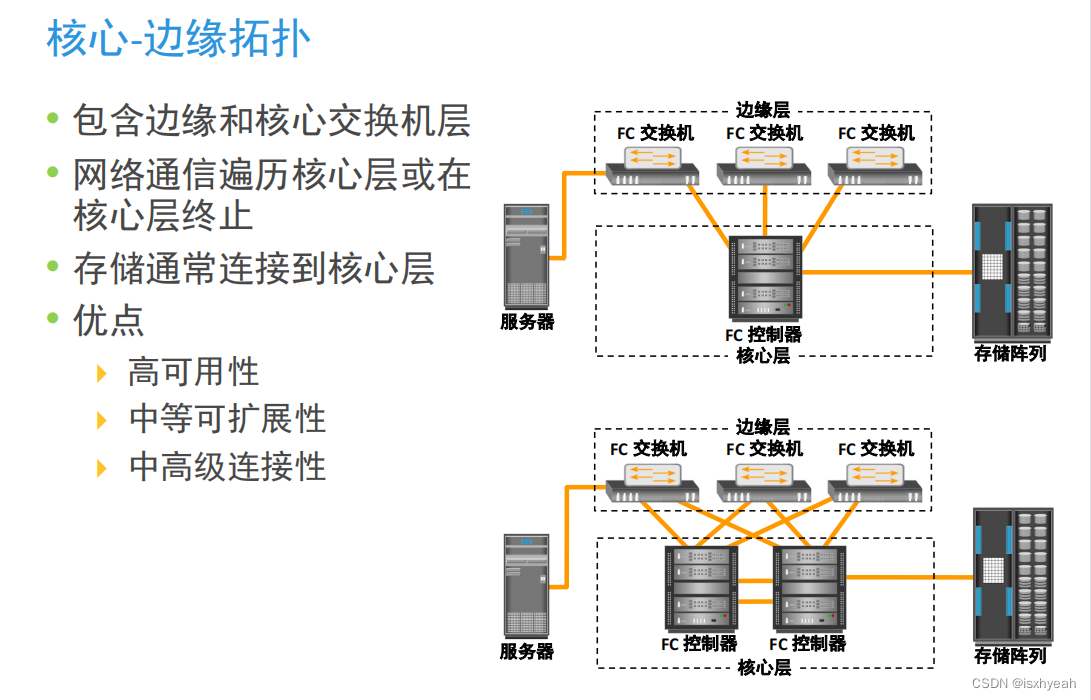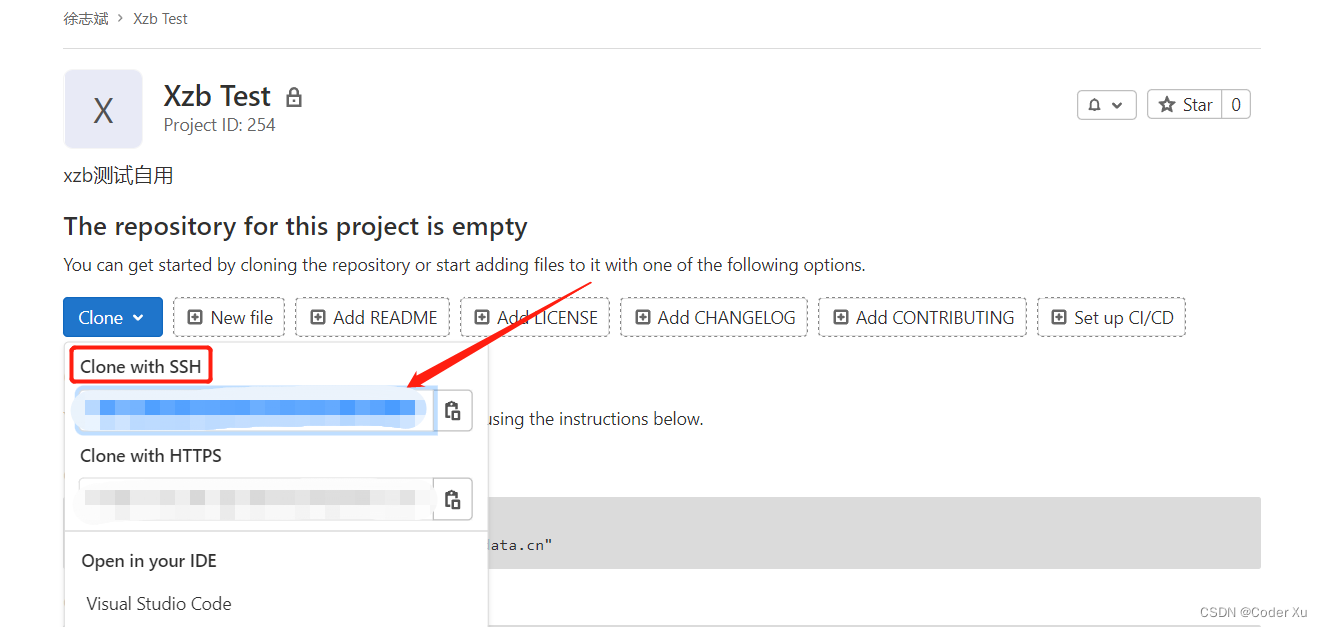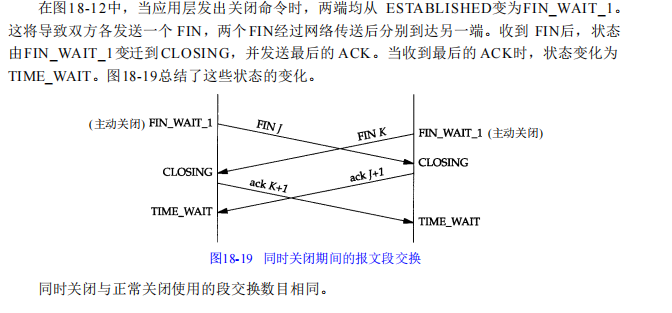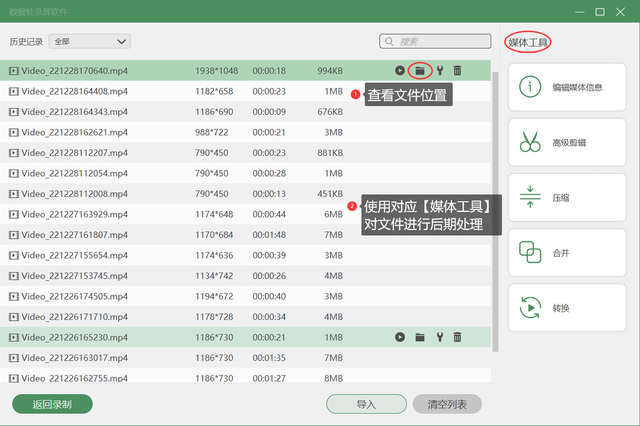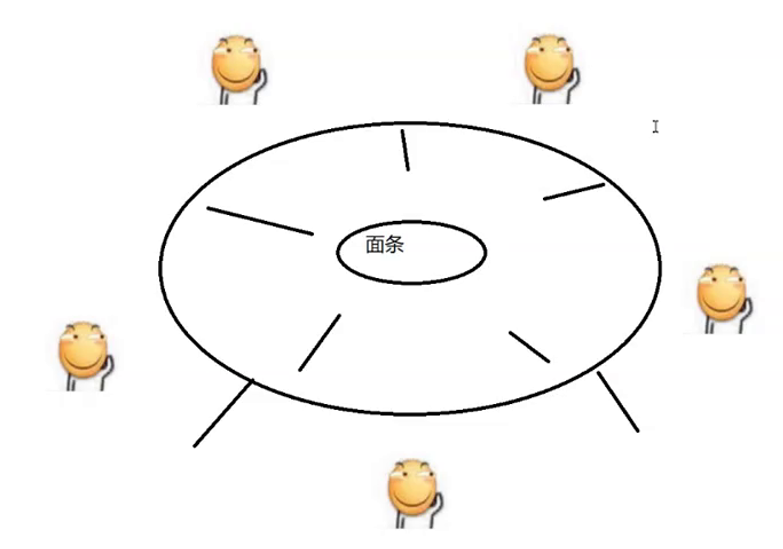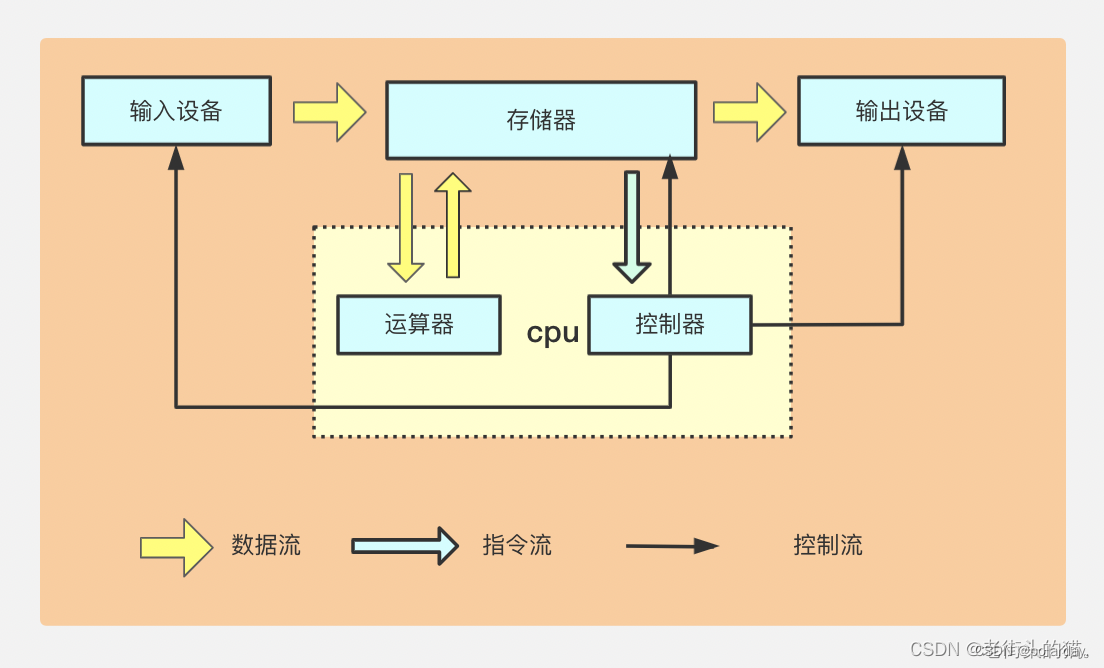第四章.误差反向传播法
4.2 ReLU/Sigmoid/Affine/Softmax-with-Loss层的实现
1.ReLU层
1).公式

2).导数:

3).计算图:

4).实现:
class ReLU:
def __init__(self):
self.mask = None
# 正向传播
def forward(self, x):
self.mask = (x <= 0) # 输入值是否≤0,返回值是由True/False构成的Numpy数组
out = x.copy()
out[self.mask] = 0 # mask中的元素为True的地方置为0
return out
# 反向传播
def backward(self, dout):
dout[self.mask] = 0
dx = dout
return dx
2.Sigmoid层
1).公式:

2).计算图:

- 简洁版

3).导数:

4).实现:
import numpy as np
class Sigmoid:
def __init__(self):
self.out = None
# 正向传播
def forward(self, x):
out = 1 / (1 + np.exp(-x))
self.out = out
return out
# 反向传播
def backward(self, dout):
dx = dout * (1.0 - self.out) * self.out
return dx
3.Affine层
- 神经网络的正向传播中进行的矩阵乘积运算在几何学领域被称为“仿射变化”,因此,将进行仿射变化的处理实现为Affine层。
- 几何中,仿射变换包括一次线性变换和一次平移,分别对应神经网络的加权和运算和加偏置运算。
1).计算图:
-
单个数据的Affine层:

-
批版本的Affine层:
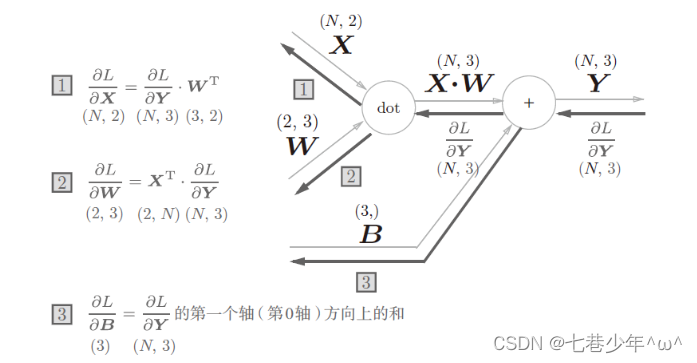
2).实现:
·未考虑输入张量的情况:
import numpy as np
class Affine:
def __init__(self, W, b):
self.W = W
self.b = b
self.x = None
self.dw = None
self.db = None
# 正向传播
def forward(self, x):
self.x = x
out = np.dot(self.x, self.W) + self.b
return out
# 反向传播
def backward(self, dout):
dx = np.dot(dout, self.W.T)
self.dw = np.dot(self.x.T, dout)
self.db = np.sum(dout, axis=0)
return dx
·考虑输入张量的情况 (张量就是多维数据)
import numpy as np
class Affine:
def __init__(self, W, b):
self.W = W
self.b = b
self.x = None
self.original_x_shape = None
# 权重和偏置参数的导数
self.dW = None
self.db = None
def forward(self, x):
# 对应张量
self.original_x_shape = x.shape # 例如:x.shape=(209, 64, 64, 3)
x = x.reshape(x.shape[0], -1) # x=(209, 64*64*3)
self.x = x
out = np.dot(self.x, self.W) + self.b
return out
def backward(self, dout):
dx = np.dot(dout, self.W.T)
self.dW = np.dot(self.x.T, dout)
self.db = np.sum(dout, axis=0)
dx = dx.reshape(*self.original_x_shape) # 还原输入数据的形状(对应张量)
return dx
4.Softmax-with-Loss层
- 神经网络中进行的处理有推理和学习两个阶段,推理阶段通常不适用softmax层,学习阶段需要使用softmax层。
1).计算图:

2).实现:
import numpy as np
class SoftmaxWithLoss:
def __init__(self):
self.loss = None # 损失
self.y = None # softmax的输出
self.t = None # 监督数据(one_hot vector)
# 输出层函数:softmax
def softmax(x):
if x.ndim == 2:
x = x.T
x = x - np.max(x, axis=0)
y = np.exp(x) / np.sum(np.exp(x), axis=0)
return y.T
x = x - np.max(x) # 溢出对策
return np.exp(x) / np.sum(np.exp(x))
# 交叉熵误差
def cross_entropy_error(y, t):
if y.ndim == 1:
t = t.reshape(1, t.size)
y = y.reshape(1, y.size)
# 监督数据是one-hot-vector的情况下,转换为正确解标签的索引
if t.size == y.size:
t = t.argmax(axis=1)
batch_size = y.shape[0]
return -np.sum(np.log(y[np.arange(batch_size), t] + 1e-7)) / batch_size
# 正向传播
def forward(self, x, t):
self.t = t
self.y = self.softmax(x)
self.loss = self.cross_entropy_error(self.y, self.t)
return self.loss
# 反向传播
def backward(self, dout=1):
batch_size = self.t.shape[0]
if self.t.size == self.y.size: # 监督数据是one-hot-vector的情况
dx = (self.y - self.t) / batch_size
else:
dx = self.y.copy()
dx[np.arange(batch_size), self.t] -= 1
dx = dx / batch_size
return dx
